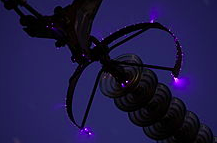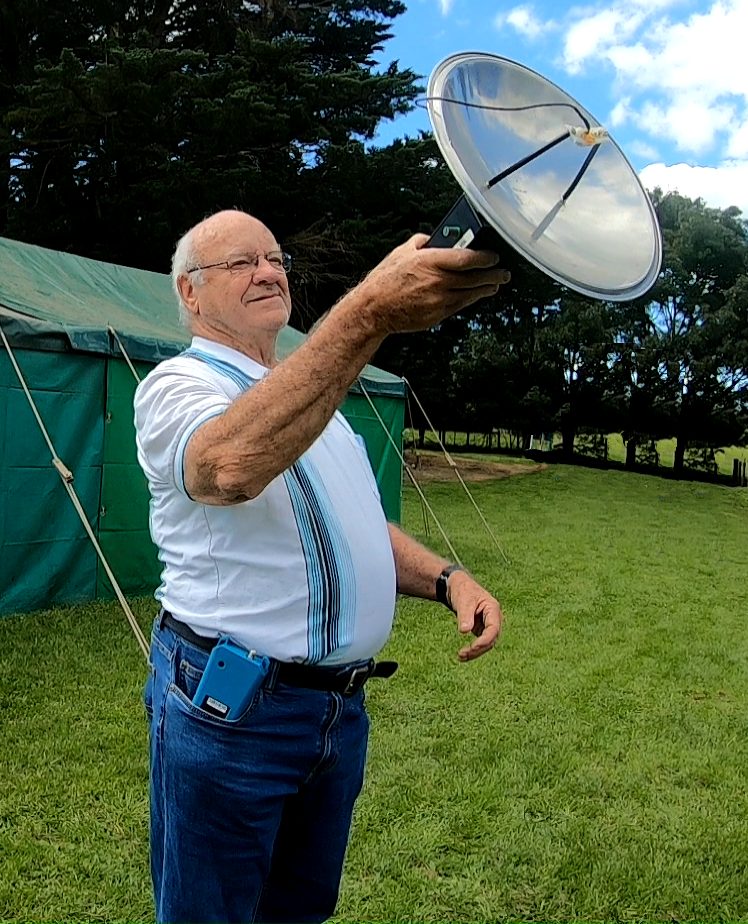 “A corona discharge is an electrical discharge brought on by the ionization of a fluid such as air surrounding a conductor that is electrically charged. Spontaneous corona discharges occur naturally in high-voltage systems unless care is taken to limit the electric field strength. A corona will occur when the strength of the electric field (potential gradient) around a conductor is high enough to form a conductive region, but not high enough to cause electrical breakdown or arcing to nearby objects. It is often seen as a bluish glow in the air adjacent to pointed metal conductors carrying high voltages, and emits light by the same property as a gas discharge lamp.
“A corona discharge is an electrical discharge brought on by the ionization of a fluid such as air surrounding a conductor that is electrically charged. Spontaneous corona discharges occur naturally in high-voltage systems unless care is taken to limit the electric field strength. A corona will occur when the strength of the electric field (potential gradient) around a conductor is high enough to form a conductive region, but not high enough to cause electrical breakdown or arcing to nearby objects. It is often seen as a bluish glow in the air adjacent to pointed metal conductors carrying high voltages, and emits light by the same property as a gas discharge lamp.
In many high voltage applications, corona is an unwanted side effect. Corona discharge from high voltage electric power transmission lines constitutes an economically significant waste of energy for utilities.”
ref: wikipedia.org
Corona discharge can sound like a frying egg, and visually it produces a bluish/purple glow around the conductor. It will only be visible in the dark. Noise levels are around 60dBu/V below 1MHz and 20 dBu/V from 10MHz and up. The ultrasonic noise generated will be heard between 30-45kHz.
Corona discharge can create extreme disruption (even blocking) to AM and SSB signals across the HF spectrum and up into the VHF and UHF spectrums.
Once you identify the noise signature it will remain constant regardless the frequency. Like a detective, you now recognise and can track down the noise source. Once you believe you have identified power line noise, start off with an AM radio and DF loop to get the general direction of the noise source. You may need to take a number of bearings from different locations and plot these on a map. When you have triangulated the signal, you can then use a 2m or 70cm beam to get closer to the noise source. This should get you to the power pole. Note down the pole number and take photos.
 Now, using the ultrasonic receiver, tune from 30-45kHz until you hear the sizzling sound. You should now be able to aim the dish at individual components (insulators, connectors, transformer hardware, etc) on the pole and identify the offender. Note that ultrasonics will not work in windy conditions.
Now, using the ultrasonic receiver, tune from 30-45kHz until you hear the sizzling sound. You should now be able to aim the dish at individual components (insulators, connectors, transformer hardware, etc) on the pole and identify the offender. Note that ultrasonics will not work in windy conditions.
Of course, night-time offers advantages, as you may actually be able to see the corona discharge.
Other tools that will assist in your efforts to locate the noise source include: Fox Hunting apps for mobile phones – these allow you to plot your position and bearings on google maps; analogue TV signal strength meters tune from 37MHz to 900Mhz continuously and VHF/UHF log periodic beam antennas will help with direction finding. Finally, a good pair of binoculars can be helpful.
Thanks to Bob VK3XP for these notes.
Follow this link to view a video of Bob’s presentation at Antennapaloza in March 2020.
